Seascape/landscape genomics aims to:
- identify environmental drivers of genetic adaptation
- predict where differentially-adapted individuals occur
- predict sites with high-risk populations due to changing enviromental conditions
- plan assisted gene flow efforts
- identify genetic variants associated with environmental differences
This field is rapidly advancing, and we are actively developing new methods to identify genotype-environment associations. See our preprint of our new method RDA-Forest HERE. Applications of this method are detailed below.
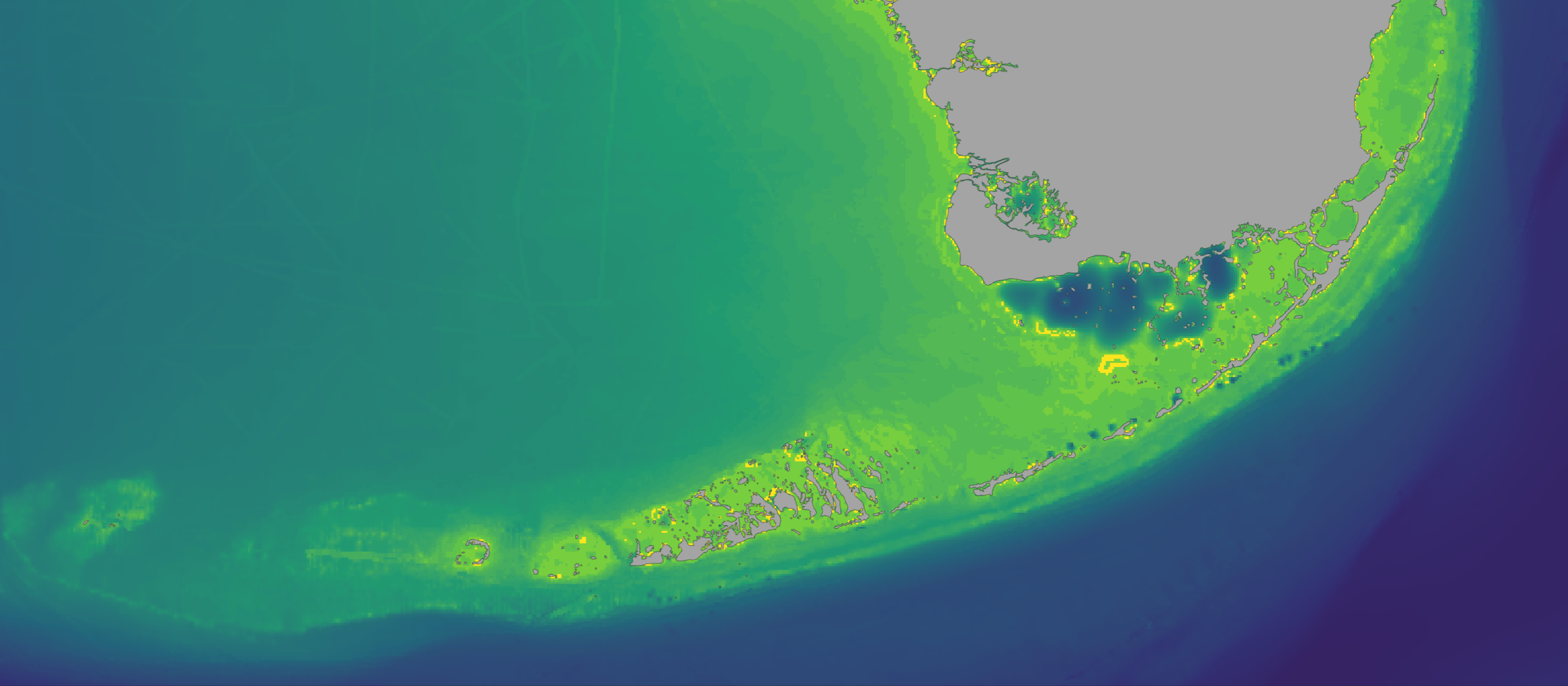
Cryptic genetic divergence in the Florida Keys
As coral reefs in the Florida Keys rapidly decline, reef restoration faces the challenge of matching outplanted corals to the environment where they are most likely to survive. Using 2bRAD sequencing, we developed a large genomic dataset for two ubiquitous coral species- Porites astreoides and Agaricia agaricites - across the whole Florida reef tract.
We’re finding that both species are composed of cryptic lineages, which is optimistic for facilitating environmental adaptation on a declining reef. Nonetheless, cryptic lineages must be protected in order to maximize adaptive potential and support phenotypic resilience.
Adaptive divergence by depth
Interestingly, the cryptic lineages often occur sympatrically but have markedly different depth distributions. We’re finding that depth plays definitive roles in driving genetic divergence in both species, although the signatures of selection are much stronger in A. agaricites than P. astreoides.
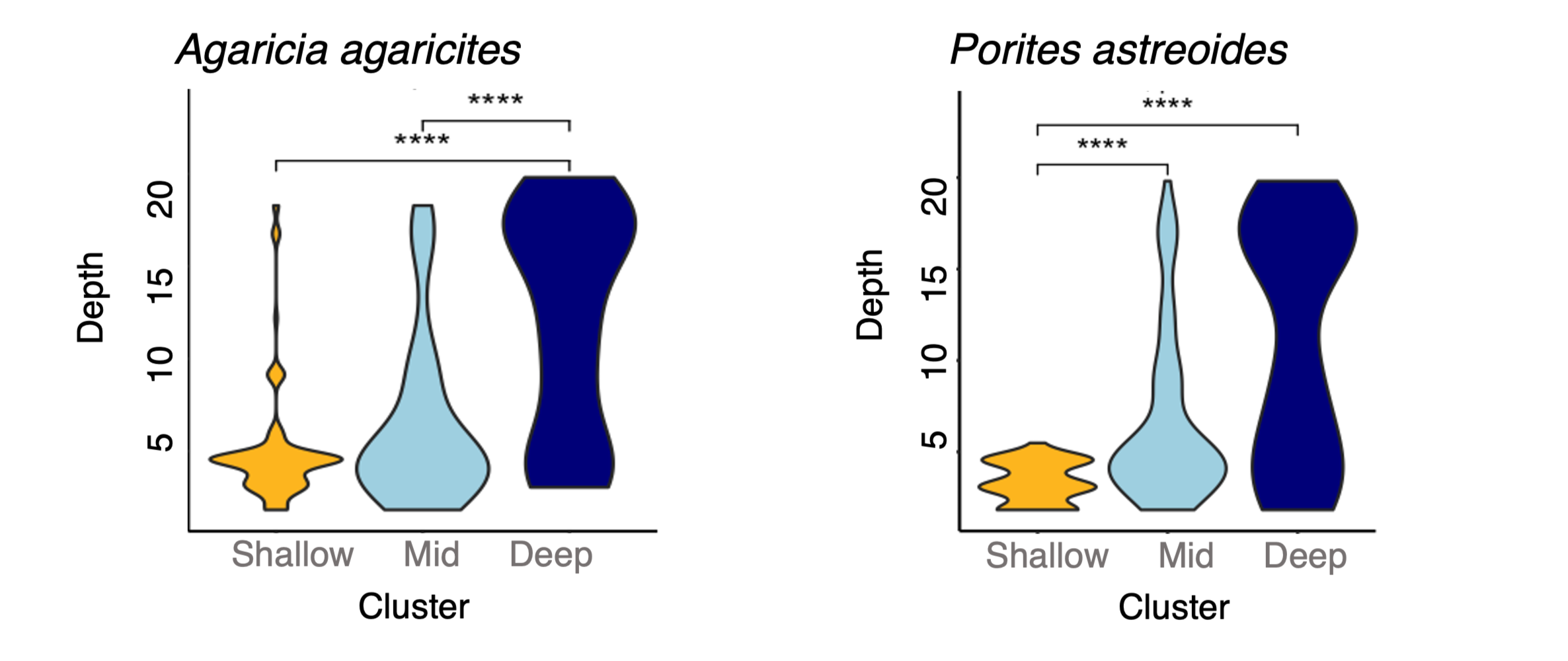
Pictured above: Range of depths inhabited by each genetic lineage for two coral species in the Florida Keys
Adaptation to water quality gradients within cryptic lineages
Surprisingly, the cryptic lineages within each species also appear to adapt to local environments on their own. In A. agaricites, nitrogen and cold temperatures appear to drive divergence within lineages. While in P. astreoides, cold temperatures also appear to be an important driver. You can view a preprint of this work HERE.
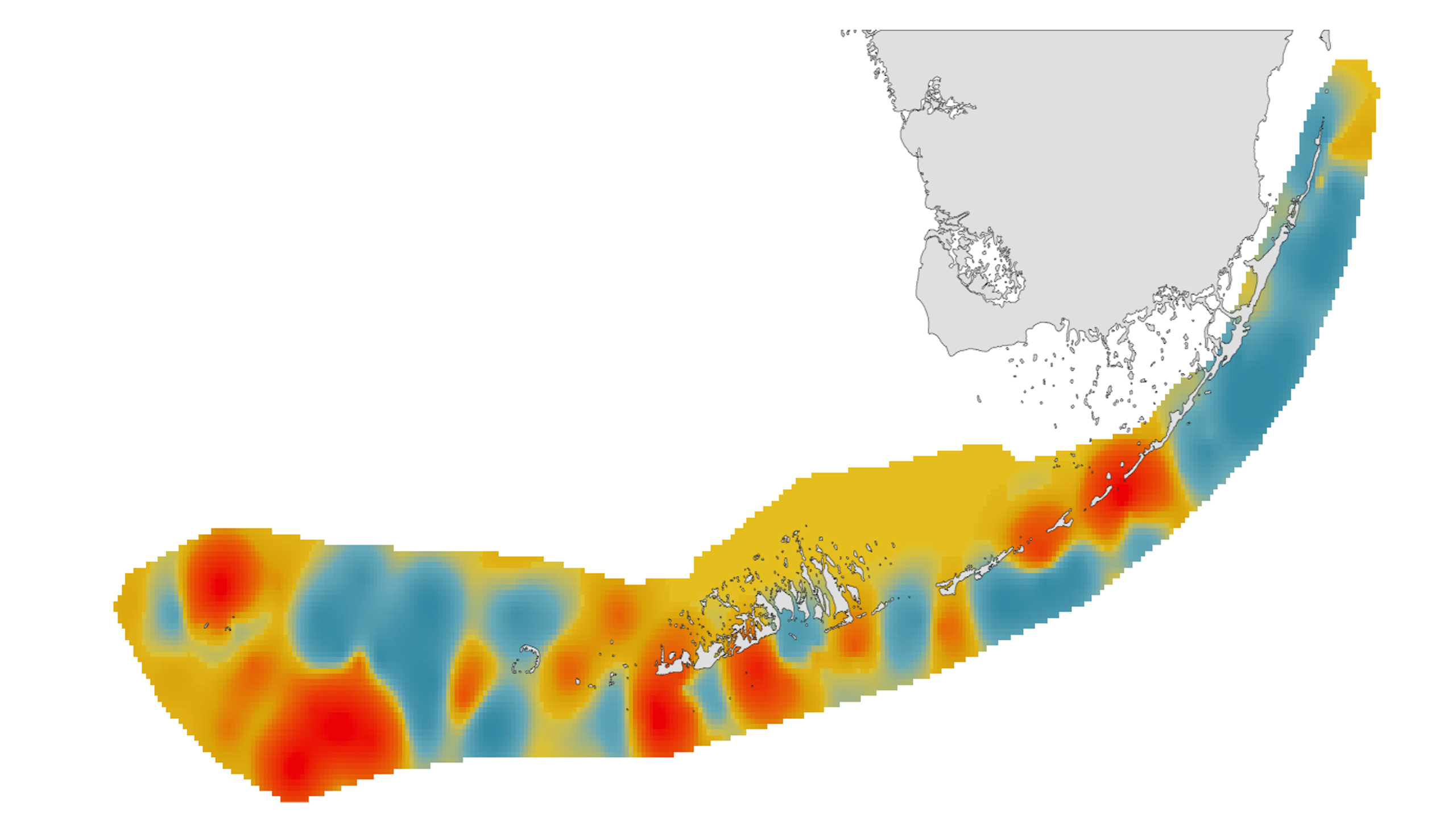
Pictured above: Map of the yearly range of total nitrogen in the Florida Keys1
Seascape genomics in St. Croix, USVI
From 2022-2024, I taught genotype-environment analyses using a dataset of six coral species from St. Croix, USVI. Under my supervision, this project was led by five undergraduates at UT-Austin, each conducting an independent analysis of their own species of coral. This project provided an opportunity for students to be fully involved in research- from genetic laboratory methods to bioinformatics pipelines to data visualization in R to writing a scientific manuscript with lead author roles in the end. This work was funded by The Nature Conservancy, and is now published in PloS One.
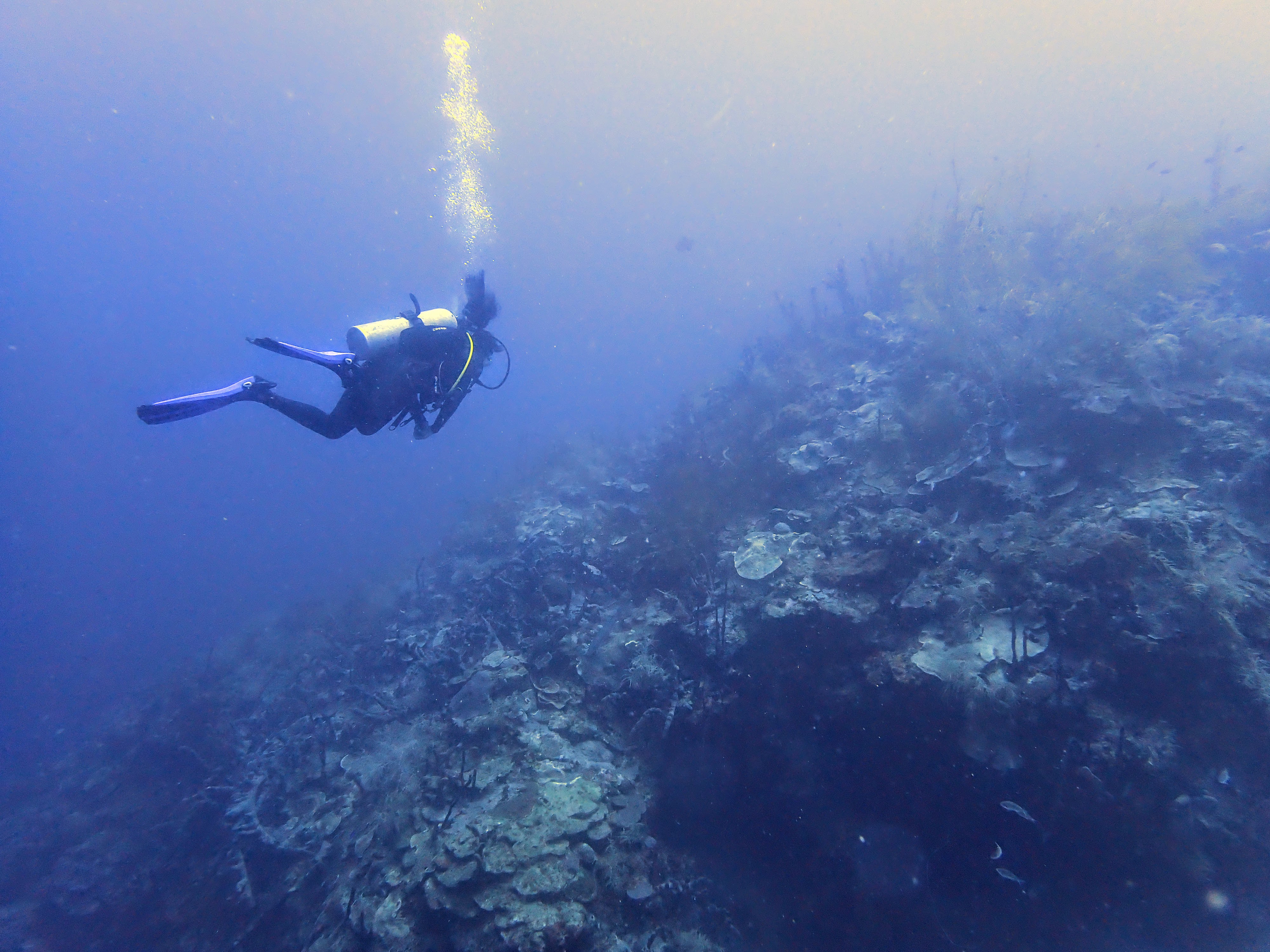
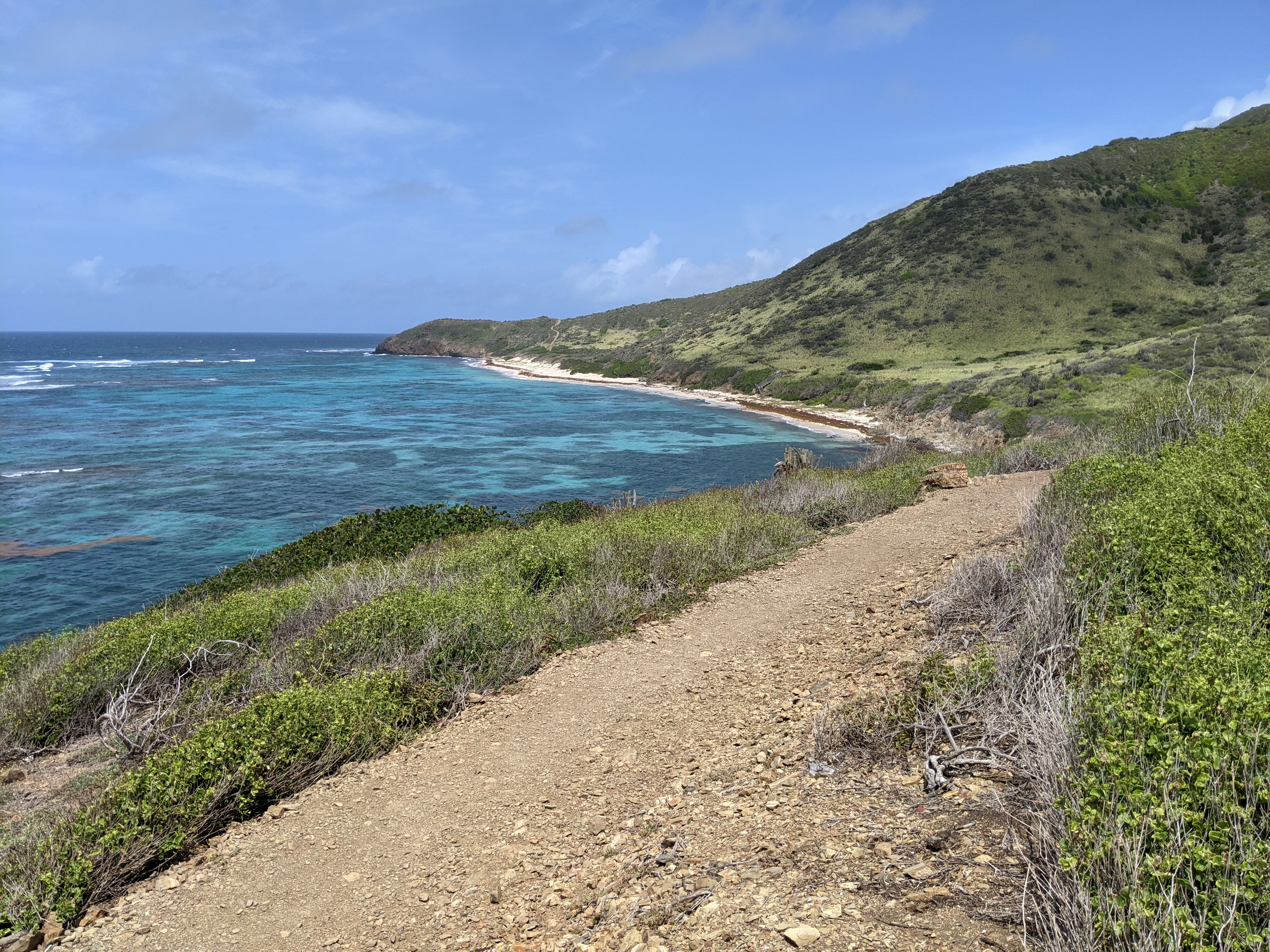
Photo 1: “The Wall” at Cane Bay, Photo 2: Isaac’s Bay in St. Croix, USVI
Broader impacts
Local adaptation can determine the stress response and fitness of coral outplants. Therefore, environmental gradients driving genetic divergence can impose strong selective pressure on outplanted corals. Defining environmental barriers is the first step to matching outplanted corals to the sites where they’re most likely to survive.
-
Water quality data is from the SERC water quality monitoring network ↩